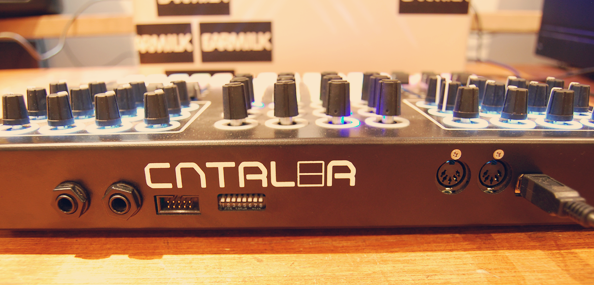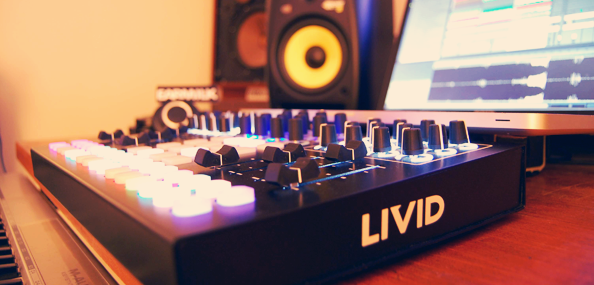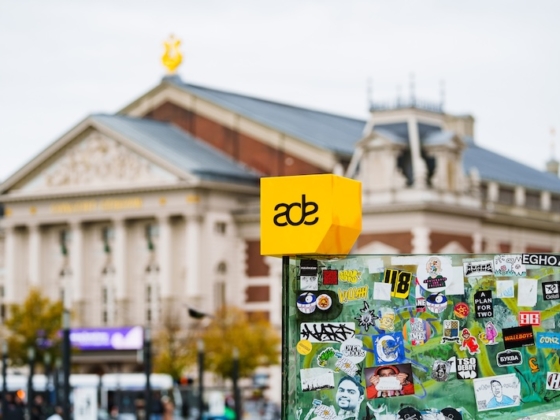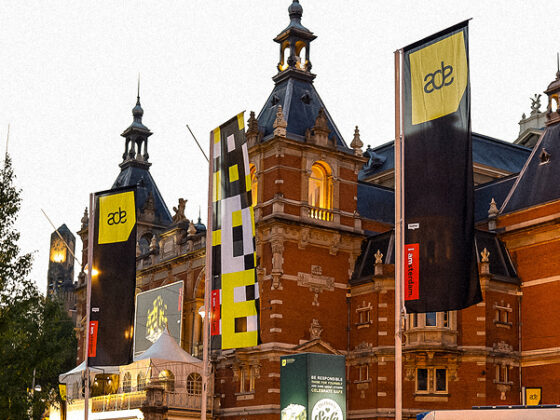What first grabbed my attention when I saw the Livid Instruments CNTRL:R was the simplicity in design and number of parameter controls available. With 2 banks of 12 knobs sandwiching 12 endless push button encoders above 8 faders, a 16 pad grid and a 32 pad sequencer grid, what more could you ask for? Techno legend Richie Hawtin actively guided the design process, and the team at Livid went all out on their new signature midi controller that was launched earlier this year. Retailing at around $700.00, the CNTRL:R is being marketed as a both a performance machine and an addition to any digital studio. Considering how well integrated the 16 step sequencer at the bottom is, it comes as no surprise that it intends to bridge the gap between production and performance.
Most of my use with the CNTRL:R has been on Ableton Live, where if used with the Max4Live plugins that it comes with, makes for one exciting little piece of equipment (and by little, I mean it – the CNTRL:R measures less than 15" wide and 10" deep, about 55% the size of the Traktor Kontrol S4 and about 62% the size of the Akai APC40, the forefront two competitors to this controller since its release earlier this year). It also performed well when used solely with Traktor, and probably the most fun was had while Traktor & Ableton Live were used in conjunction with each other. Making use of the Drum Stepp:r and Synth Stepp:r really set this product apart from anything else, but if you're just looking to use this one right out of the box, you're still in for a good time.
The Livid Instruments Drum Stepp:r turns the controller (with the simple push of the upper row encoder knobs) into a live performance tool that's ideal for creating on the fly drum patterns with incredible ease, and what's best is the parameter controls that are automatically mapped to the middle endless encoder knobs, including delay, attack, release, sustain, and eight others, allowing for complete control over any drum sample. The 4×4 grid in the middle of the CNTRL:R lets you instantly switch between any of your samples that are loaded in the the Ableton Operator drum rack, and the lower 16 step sequencer gives you on time, on the fly input for any of the sounds loaded. The Synth Stepp:r, as you would have thought, works in a similar fashion but with an instrument instead of a drum rack. Simply load up these plugins, start your set, and get ready for most spontaneous, unique sounding performance you'll ever experience in 1 controller weighing less than 5lbs.
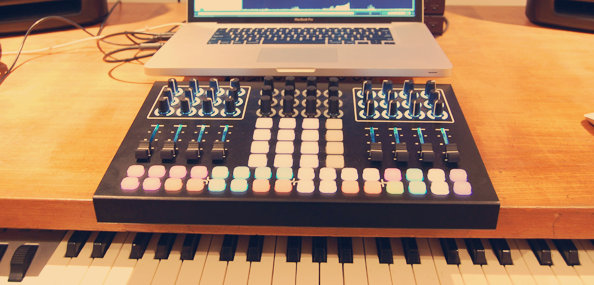
With a retail price of around $700.00, you would expect nothing but the best in terms of quality and craftsmanship, and after using the CNTRL:R for a few months now on a regular basis, its pretty clear that this was built to last. There's a full aluminum body with rubber feet so it sits at a proper height relative to club mixers. The pads have a playful feel to them and lots of give for those of you who like to give your controller a beating. The only issue that may arise, and this would easily be avoided if I had a proper case instead of just tossing it in my gig bad, but the faders have a slightly high and narrow profile, which has led to the outer ones bending slightly. I haven't seen any negative effects from it and the aluminum casing does look like it protects the fader from ever fully breaking, so for the added tactile feel you get with a higher, narrower fader, maybe this was a risk worth taking.
Personally, I can't help but dive into the mapping of the controller and customize it the way that works best for me, something I highly suggest any young DJ using controllers to experiment with. For use with the CNTRL:R during my live set in Ableton, I've created a 3 channel setup with dedicated effects on each channel. I've remapped the lower sequence grid of 32 buttons to become my loop control for all 3 decks so that there are 3 groups of 8 from left to right using both rows of buttons, and the fourth group of 8 became a quick up/down control for each channel for scrolling through clips. On the far right of the 32 are two buttons that control the up/down movement of the clip launch grid.
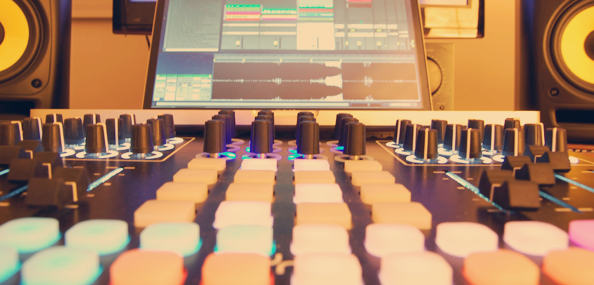
Moving up to the faders, on the left side are 3 which control the levels for the main 3 channels, as well as one that I keep free for use with Traktor. On the other side are another group of 4 faders, 3 of which are mapped to a high pass filter for each channel, and the fourth is the resonance for all of those filters. With a good hi pass filter you can cut out all the low end frequencies and not have much noise interference as long as the resonance is kept to zero. I've done the same thing with a low pass filter mapped to the upper row of knobs on the right side of the CNTRL:R, as I find the hi pass to be much more useful in cutting out competing frequencies in a live scenario. In fact with good filters you can almost avoid touching the EQ, although if you wanted to, the CNTRL:R certainly gives you room for a full section of whichever EQ you wish to map. I've mapped the left side of knobs to have a low, mid, and hi above each of the channels faders.
Overall, this midi controller (USB powered which is very handy) makes for the complete package. If you need more buttons or knobs than whats here on this controller, you're either doing too much or wasting space (or you really are using it all, in which case, well done). The LED feedback is next to none, and the quality is up there with industry standards. While it could benefit from a few inches space in either direction so that knobs aren't so crowded, but the design and software capabilities that it comes with really set this CNTRL:R in another league. The Drum Stepp:r and Synth Stepp:r are the next step in live performance, and allow for it all on one controller while your live set runs all the while. Maybe a bit overpriced simply considering the competition, but then again when you compare it to something like the new Pioneer external effect unit, this comes as a bargain, especially when you consider how much you can really accomplish with a machine like this.
